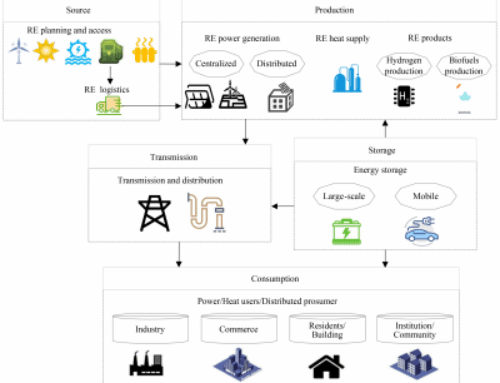Quantifying Ivermectin in Swine Farm Environments Using LC-MS/MS
October 28, 2025
A study conducted by Italy’s University of Parma and the Experimental Zooprophylactic Institute of Lombardy and Emelia Romagna (IZSLER, Brescia, Italy) detected the presence of the veterinary drug ivermectin (IVM) in intensive swine farms, with the goal of quantifying and comparing the levels detected to potentially toxic concentrations for non-target species in the environment. IVM was quantified in samples using liquid chromatography-tandem mass spectrometry (LC-MS/MS). A paper based on this research was published in Veterinary Medicine and Science (1).
Several studies have identified IVM as a possible environmental pollutant affecting both animal and botanical species (2-6). Authorized by the European Medicines Agency (EMA) and the American Food and Drug Administration (FDA) for use in both human and veterinary medicine, IVM is available in several varieties, such as feed premixes, spot-on treatments, and injectable solutions (7-9). The drug is an effective safeguard against a wide variety of parasites and has an outstanding safety record when used according to the summary of product characteristics (SmPC), which has contributed to its widespread acceptance (10-12).
Veterinary drugs such as IVM may enter the environment through slurry or manure from intensively farmed animals, or through the dung or urine of grazing livestock, and pollute surface waters via runoff, leaching, or drainage systems (13-16). While the Environmental Risk Assessment (ERA) of Pharmaceuticals did not categorize IVM as a major concern, parasite resistance has been confirmed by multiple studies, which poses additional challenge when active residues persist in the environment without being degraded (17,18). For these reasons, the extensive and systematic use of IVM in livestock has been questioned (1).
Two farms in Emilia-Romagna, Italy using IVM and a control farm without antiparasitic drugs were used for this study. Fecal, slurry, soil, and wastewater samples were collected at three treatment points: before, and 1 and 10 d post-treatment. Ivermectin, administered either orally or by injection, was analyzed, as mentioned previously, via LC-MS/MS. Fecal residues were found to vary significantly depending on the administration route, with orally treated sows having higher concentrations of IVM in feces shortly after treatment (median = 930.25 µg kg-1) than sows injected with the drug (median = 14.84 µg kg-1). Ten days following treatment, however, the injected sows exhibited higher residue levels in their feces, which indicated different excretion patterns. Soil samples that were fertilized with farm slurry retained ivermectin residues which sometimes exceeded ecotoxicological thresholds for non-target species such as dung beetles and earthworms, with concentrations reaching as high as 39.23 µg kg-1. There were no residues above detection limits found in slurry or wastewater, which was probably because of IVM’s hydrophobicity and dilution (1).
The findings highlight the environmental risks of IVM use in swine farming and stress the need for sustainable drug management. They additionally state that broader studies are necessary for the refining of residue distribution patterns and improvement of environmental guidelines, especially for other livestock systems and soil types, for the insuring of ecological sustainability (1).
Read More on Similar Topics:
Novel Analytical Method Detects Pesticide Residues in Livestock Urine
References
- Carrillo Heredero, A. M.; Butovskaya, E.; Segato, G. et al. Does Ivermectin Pollute the Surroundings of Swine Farms? Vet. Med. Sci. 2025, 11 (6), e70634. DOI: 10.1002/vms3.70634
- Davies, I. M.; McHenery, J. G.; Rae, G. H. Environmental Risk From Dissolved Ivermectin to Marine Organisms. Aquaculture 1997, 158, 263–275. DOI: 10.1016/S0044-8486(97)00209-3
- Floate, K. D., Wardhaugh, K. G.; Boxall, A. B. A. et al. Fecal Residues of Veterinary Parasiticides: Nontarget Effects in the Pasture Environment. Annual Review of Entomology 2004, 50, 153–179. DOI: 10.1146/annurev.ento.50.0718
- Halley, B. A.; Jacob, T. A.; Lu, Y. H. The Environmental Impact of the Use of Ivermectin: Environmental Effects and Fate. Chemosphere 1989, 18, 1543–1563. DOI: 10.1016/0045-6535(89)90045-3
- Vokřál, I.; Michaela, Š.; Radka, P. et al. Ivermectin Environmental Impact: Excretion Profile in Sheep and Phytotoxic Effect in Sinapis alba. Ecotoxicol. Environ. Saf. 2019, 169, 944-949. DOI: 10.1016/j.ecoenv.2018.11.097
- Wall, R.; Strong, L. Environmental Consequences of Treating Cattle with the Antiparasitic Drug ivermectin. Nature, 1987, 327 (6121), 418-421. DOI: 10.1038/327418a0
- European Agency for the Evaluation of Medicinal Products, Committee for Veterinary Medicinal Products. 2009. Ivermectin—Summary Report. https://www.ema.europa.eu/en/documents/referral/opinion-following-article-35-referral-injectable-veterinary-medicinal-products-containing-ivermectin-are-indicated-use-cattle-dose-200-ug-ivermectin-kg-bodyweight-international-non-propriet_en.pdf
- González Canga, A.; Sahagún Prieto, A. M.; José Diez Liébana, M. et al. The Pharmacokinetics and Metabolism of Ivermectin in Domestic Animal Species. Vet J. 2009, 179 (1), 25-37. DOI: 10.1016/j.tvjl.2007.07.011
- Italian Health Ministry. 2024. Veterinary Medicinal Products Formulary – Online database of summaries of product characteristics of veterinary medicinal products Prontuario dei medicinali veterinari—Banca dati online dei riassunti delle caratteristiche dei prodotti medicinali veterinari. https://www.vetinfo.it/j6_prontuario/public/ (accessed 2024-08-03)
- Laing, R.; Gillan, V.; Devaney, E. Ivermectin—Old Drug, New Tricks?, Trends in Parasitology. Elsevier Ltd., 2017. DOI: 10.1016/j.pt.2017.02.004
- Martin, R. J.; Robertson, A. P.; Choudhary, S. Ivermectin: An Anthelmintic, an Insecticide, and Much More. Trends Parasitol. 2021, 37 (1), 48-64. DOI: 10.1016/j.pt.2020.10.005
- Suvarna, V. Ivermectin: A Critical Review on Characteristics, Properties, and Analytical Methods. J AOAC Int. 2023, 106 (3), 534-557. DOI: 10.1093/jaoacint/qsad031
- Boxall, A. B.; Fogg, L. A.; Blackwell, P. A. et al. Veterinary Medicines in the Environment. Rev. Environ. Contam. Toxicol. 2004, 180, 1-91. DOI: 10.1007/0-387-21729-0_1
- Kools, S. A.; Boxall, A.; Moltmann, J. F. et al. A Ranking of European Veterinary Medicines Based on Environmental Risks. Integr. Environ. Assess Manag. 2008, 4 (4), 399-408. DOI: 10.1897/IEAM_2008-002.1
- Li, Y. X,.; Zhang, X. L.; Li, W. et al. The Residues and Environmental Risks of Multiple Veterinary Antibiotics in Animal Faeces. Environ. Monit Assess. 2013, 185 (3), 2211-2220. DOI: 10.1007/s10661-012-2702-1
- Song, W.; Guo, M. Residual Veterinary Pharmaceuticals in Animal Manures and Their Environmental Behaviors in Soils.; In Applied Manure and Nutrient Chemistry for Sustainable Agriculture and Environment, He, Z. and H. Zhang, H., Editors. Springer Netherlands, 2014, p. 23-52. DOI: 10.1007/978-94-017-8807-6_2.
- Halley, B. A.; VandenHeuvel, W. J.; Wislocki, P. G. Environmental Effects of the Usage of Avermectins in Livestock. Vet. Parasitol. 1993, 48 (1-4), 109-125. DOI: 10.1016/0304-4017(93)90149-h
- Liebig, M.; Fernandez, A. A.; Blübaum-Gronau, E. et al. Environmental Risk Assessment of Ivermectin: A Case Study. Integr. Environ. Assess Manag. 2010, 6 (s), 567-587. DOI: 10.1002/ieam.96
Search
RECENT PRESS RELEASES
Related Post




